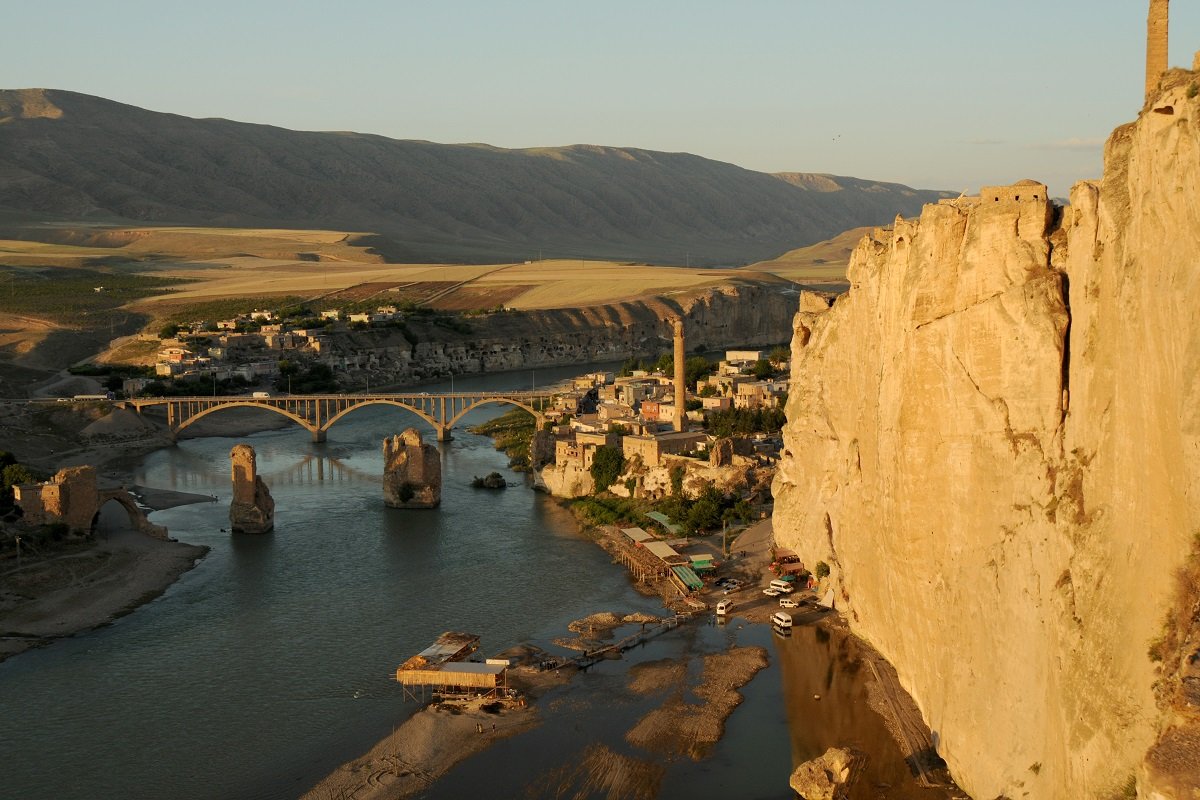
The 12,000-year-old Hasankeyf settlement in Turkey’s southeast is on the verge of complete destruction, after a Constitutional Court ruling gave the final go-ahead for a controversial dam project that is set to leave the ancient town under water.
According to a report by Hurriyet daily news on Wednesday, the top court has ruled that the issue was at the “discretion of the state,” as the construction of the Ilısu Dam and hydroelectric power plant project (HES) were matters of “public welfare” and “outside the Constitutional Court’s jurisdiction.”
Sitting on the banks of Tigris River, the town of Hasankeyf in the southeastern province of Batman is home to a rich archaeological heritage spanning nine civilizations, including the Roman, Byzantine and Ottoman empires. The town, which was declared a natural conservation area in 1981, meets nine of the total 10 criteria to be deemed a UNESCO World Heritage site.
But soon it will be consumed by the waters of the Ilısu Dam, which officials say will provide electricity and irrigation to the region. The dam will raise water levels of the Tigris River by around 60 meters, submerging the ancient town and villages around it, including immovable historical artifacts.
The issue was brought to the Constitutional Court by “Hasankeyf’i Yaşatma Girişimi” (the Initiative to Keep Hasankeyf Alive), a movement founded in 2006 to campaign against the Ilısu dam project. But with the top court’s recent ruling giving the final go-ahead for the construction of the dam, the ancient town will soon disappear.
Civilized life in the antique town of Hasankeyf dates back to 8th century B.C. and the drawings inside the caves scattered around the town shed light on different periods, cultures and architectures of humanity. It is home to evidences on the roots of human species, the beginning of agriculture, and the beginning of civilization. The nearly 6,000 caves around the antique town are one of the first sites of human settlement.
With its history and nature, Hasankeyf fulfills 9 of the 10 UNESCO criteria to be protected as human heritage. Hasankeyf also possesses one of the richest treasures of Islamic monuments. Sitting on the banks of the River Tigris, the antique town is one of the most important architectural and archaeological sites of the world, boasting a rich biodiversity and 12,000 years of human history. Masterpieces of Islamic architecture, dating from the 12th to 15th centuries C.E., make the town one of the best preserved witnesses to Seljuk urban culture, particularly from the Artukid and Ayyubid dynasties.
A small town with a great heritage, Hasankeyf already attracts about 500,000 visitors each year, a number expected to rise. Given its historical, architectural and economic significance for the region, public opinion supports its preservation. The area was declared a First Degree Archaeological Site by Turkey’s Supreme Board of Monuments in 1978 and has been under the protection of the Culture Ministry’s General Directorate of Antiquities and Museums since 1981.
There are more than 300 archaeological sites within a 7 thousand hectares of land where the town settled. 83 of these sites are directly affected by the dam, and the others are susceptible to the dam’s erosion affect.














